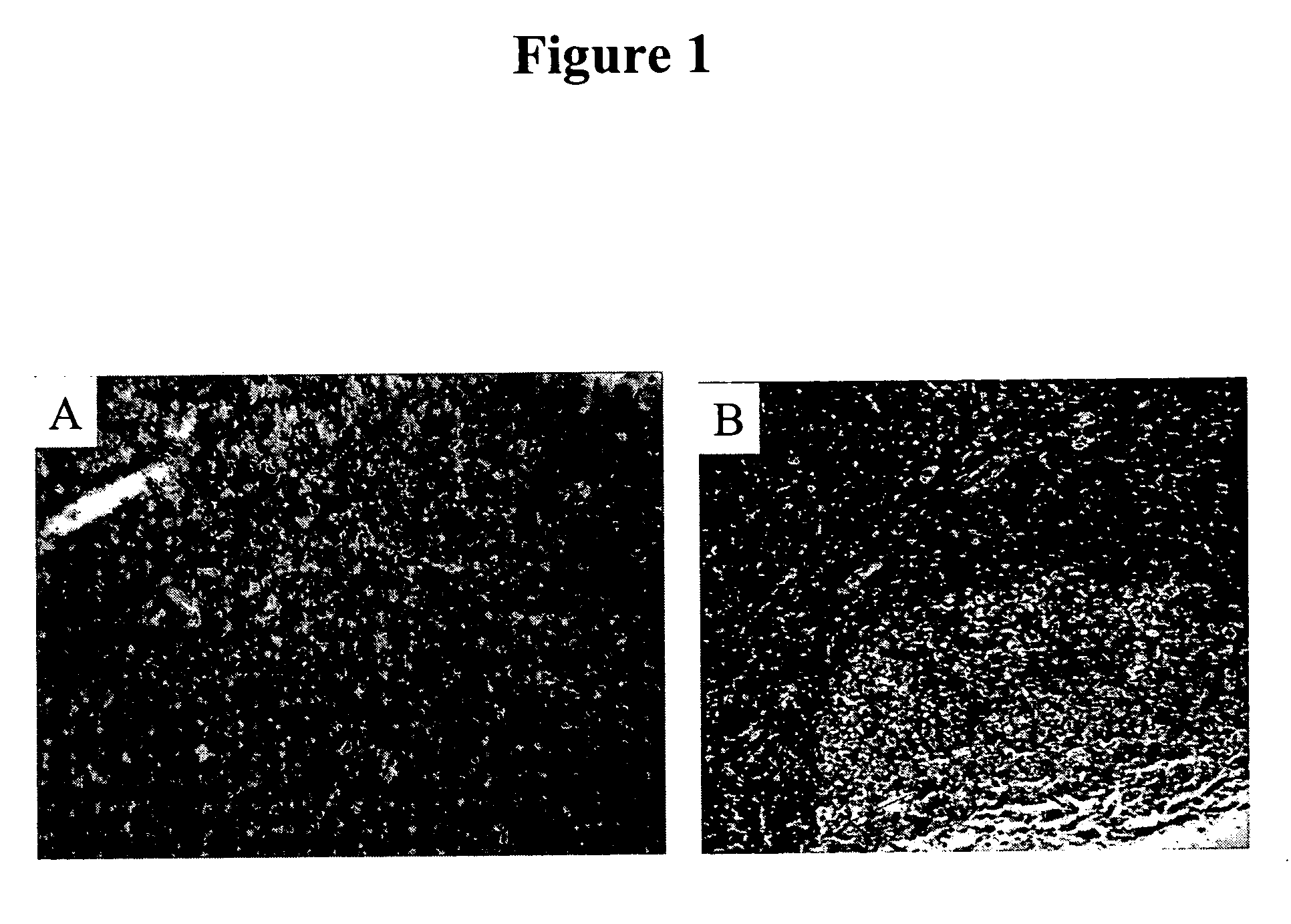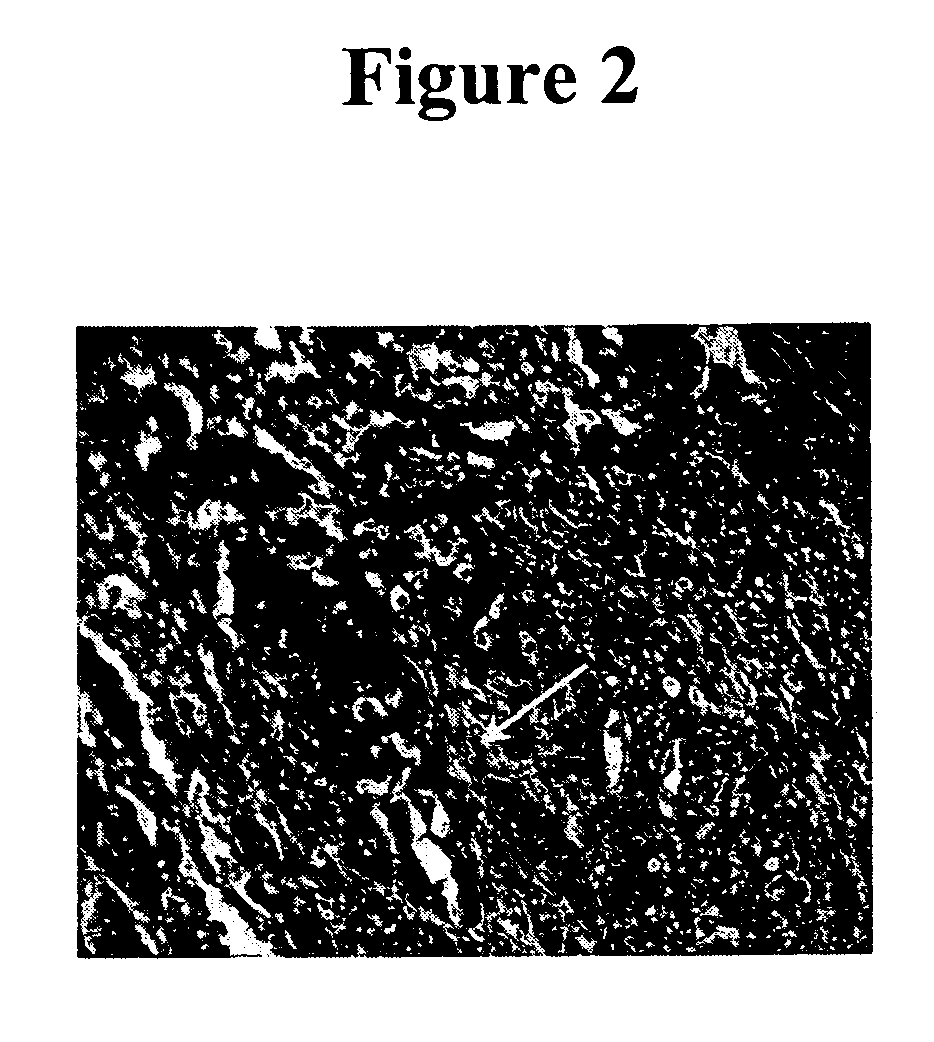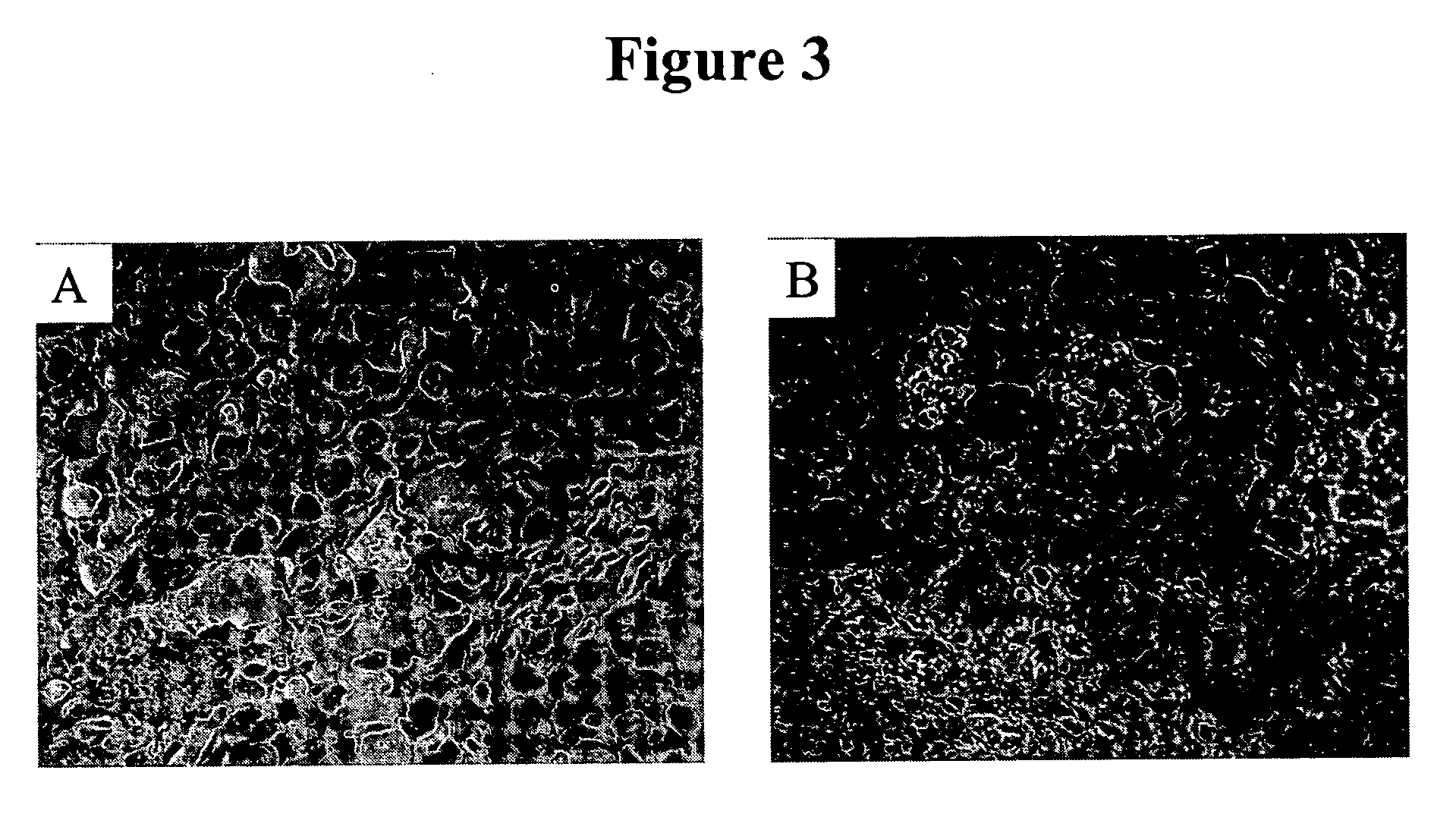Cytotoxicity mediation of cells evidencing surface expression of CD44
a cytotoxicity and surface expression technology, applied in the field of cancer diagnosis and treatment, can solve the problems of insufficient evidence, inconsistent findings, and increased likelihood of tumor invasiveness and induction of angiogenesis through the ecm
- Summary
- Abstract
- Description
- Claims
- Application Information
AI Technical Summary
Benefits of technology
Problems solved by technology
Method used
Image
Examples
example 2
Normal Human Tissue Staining
[0078] IHC studies were previously conducted to characterize H460-16-2 antigen distribution in humans (Ser. No. 10 / 603,000) and in comparison to L178 (Ser. No. 10 / 647,818). The current studies compare H460-16-2 to another antibody directed against CD44 (BU75) since the H460-16-2 antigen may be a cancer variant of CD44 as determined previously by biochemical methods. Binding of antibodies to 59 normal human tissues was performed using a human normal organ tissue array (Imgenex, San Diego, Calif.). All primary antibodies (H460-16-2; BU75 anti-CD44 (BIOCAN Scientific Inc., Mississauga, ON); and mouse IgG1 negative control (Dako, Toronto, ON)) were diluted in antibody dilution buffer (Dako, Toronto, ON) to a concentration of 5 μg / ml (found to be the optimal concentration in previous optimization steps). The negative control antibody has been shown to be negative to all mammalian tissues by the manufacturer. The procedure for IHC is as follows.
[0079] Tissue...
example 3
Human Breast Tumor Tissue Staining
[0082] Previous IHC studies were undertaken to determine the cancer association of the H460-16-2 antigen with human breast cancers and whether the H460-16-2 antibody was likely to recognize human cancers (Ser. No. 10 / 603,000) and how it compared to anti-CD44 staining with L178 (Ser. No. 10 / 647,818). Currently, a comparison was made for BU75 anti-CD44 staining, c-erbB-2 anti-Her2 and an antibody directed towards Aspergillus niger glucose oxidase, an enzyme which is neither present nor inducible in mammalian tissues (negative control). A breast cancer tissue array derived from 50 breast cancer patients and 10 samples derived from non-neoplastic breast tissue in breast cancer patients was used (Imgenex Corporation, San Diego, Calif.). The following information was provided for each patient: age, sex, American Joint Committee on Cancer (AJCC) tumor stage, lymph node, estrogen receptor (ER) and projesterone receptor (PR) status. The procedure for IHC f...
example 4
In Vivo PC-3 Established Chemotherapy Combination Tumor Experiments
[0089] With reference to FIGS. 5 and 6, 6 to 8 week old male SCID mice were implanted with 1 million PC-3 human prostate cancer cells in 100 microlitres saline injected subcutaneously in the scruff of the neck. Tumor growth was measured with calipers every week. When the majority of the cohort reached a tumor volume of 80 mm3 (range 50-130 mm3) at 21 days post-implantation, 8 mice were randomly assigned into each of 4 treatment groups. H460-16-2 antibody, the chemotherapeutic drug Cisplatin, the combination of H460-16-2 and Cisplatin or buffer control was administered intraperitoneally with 15 or 6 mg / kg of antibody or Cisplatin respectively at a volume of 300 microliters after dilution from the stock concentration with a diluent that contained 2.7 mM KCl, 1 mM KH2PO4, 137 mM NaCl and 20 mM Na2HPO4. H460-16-2 or buffer control was then administered 4 times per week for the first week followed by 3 times per week fo...
PUM
| Property | Measurement | Unit |
|---|---|---|
| concentration | aaaaa | aaaaa |
| concentration | aaaaa | aaaaa |
| concentration | aaaaa | aaaaa |
Abstract
Description
Claims
Application Information
 Login to View More
Login to View More - R&D
- Intellectual Property
- Life Sciences
- Materials
- Tech Scout
- Unparalleled Data Quality
- Higher Quality Content
- 60% Fewer Hallucinations
Browse by: Latest US Patents, China's latest patents, Technical Efficacy Thesaurus, Application Domain, Technology Topic, Popular Technical Reports.
© 2025 PatSnap. All rights reserved.Legal|Privacy policy|Modern Slavery Act Transparency Statement|Sitemap|About US| Contact US: help@patsnap.com



